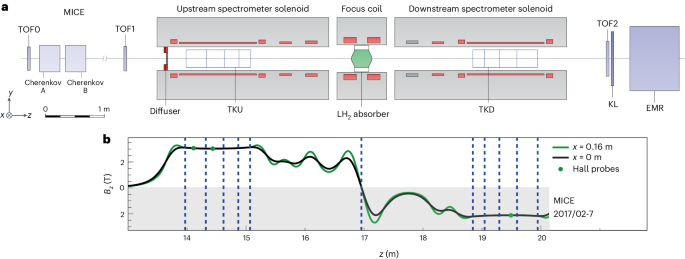2024-07-15 スイス連邦工科大学ローザンヌ校(EPFL)
<関連情報>
- https://actu.epfl.ch/news/researchers-discover-novel-deepwater-renewal-proce/
- https://agupubs.onlinelibrary.wiley.com/doi/10.1029/2023WR034936
大規模で深い湖(レマン湖)における深層水の更新: 熱収支分解を用いた冬の冷却プロセスの特定と定量化 Deepwater Renewal in a Large, Deep Lake (Lake Geneva): Identifying and Quantifying Winter Cooling Processes Using Heat Budget Decomposition
N. Peng, U. Lemmin, F. Mettra, R. S. Reiss, D. A. Barry
Water Resources Research Published: 18 April 2024
DOI:https://doi.org/10.1029/2023WR034936

Abstract
Wintertime deepwater renewal, which is important for heat–oxygen–nutrient exchange in lakes, is traditionally considered to be mainly driven by 1D vertical convective cooling. However, differential cooling between shallow and deep waters can produce density currents that flow into deep layers. In order to determine the role that these two cooling processes play in deepwater renewal, field measurements and 3D numerical modeling were combined to investigate heat content dynamics in Lake Geneva’s large basin, the Grand Lac (maximum depth 309 m), during an exceptionally cold air spell in early 2012 where complete overturning had been reported. In a novel approach, the heat budget of the lake was decomposed, which allowed the identification and quantification of the heat budget components. The heat budget decomposition revealed that vertical convective cooling only penetrated to 200 m and that lateral advection was not only caused by density currents being discharged from the shallow littoral zone of the Grand Lac, but also from the Lake’s shallow Petit Lac basin (maximum depth 75 m); the latter was found to be the main driver of heat content decrease in the deep layers of the Grand Lac below ∼200-m depth. These findings provide unique insight into heat exchange processes that cannot be obtained from field data or numerical simulations alone. Heat budget decomposition proved to be a powerful, universally applicable tool for quantifying the contribution of alternative deepwater renewal processes. This is important, since deepwater renewal by convective cooling is weakening due to persistent global warming.
Key Points
Deepwater renewal in a large, 309-m deep lake during a very cold air spell is investigated by field observations and 3D numerical modeling
A novel heat budget decomposition methodology allows for quantification of contributions of different processes to deepwater renewal
Lateral advection by density currents from shallow areas and a side basin was identified as the governing process in deepwater renewal
Plain Language Summary
Winter cooling is an important process for heat–oxygen–nutrient exchange in lakes. Traditionally considered to be mainly driven by 1D vertical convective cooling, complete overturning occurs when temperatures become homogeneous over the full water depth. In most deep lakes, this only occurs occasionally. Complete overturning in 309-m deep Lake Geneva was reported for winter 2012. Field measurements taken at the deepest part of the lake, however, showed that the lake’s temperature profile during that winter was not uniform. Instead, it had a cooler, deep bottom layer. To understand this temperature profile, we used 3D numerical modeling to decompose the lake’s heat budget. This novel approach made it possible to investigate and quantify the contribution of: (a) vertical top-down convective cooling, and (b) lateral advection of cold water from shallower regions to the lake’s deep layers. The results revealed that convective cooling did not reach below ∼200-m depth. Instead, lateral cold-water advection from the lake’s shallow side basin and nearshore regions were responsible for the cooling and deepwater renewal below that depth. As climate change induced-warming continues to weaken convective cooling, it will become increasingly important to understand and consider lateral advection as an alternative deepwater renewal process in large, deep lakes.



